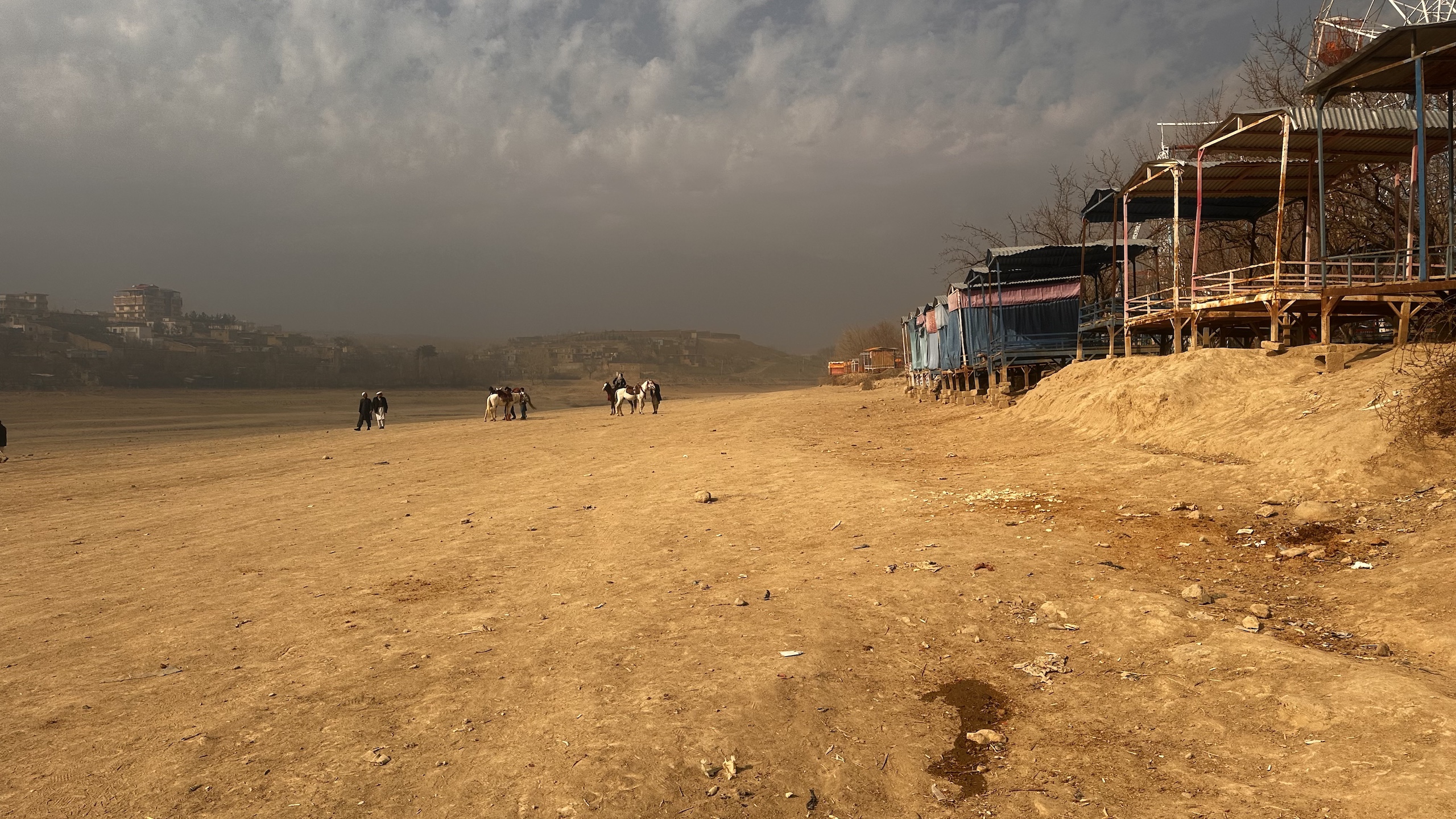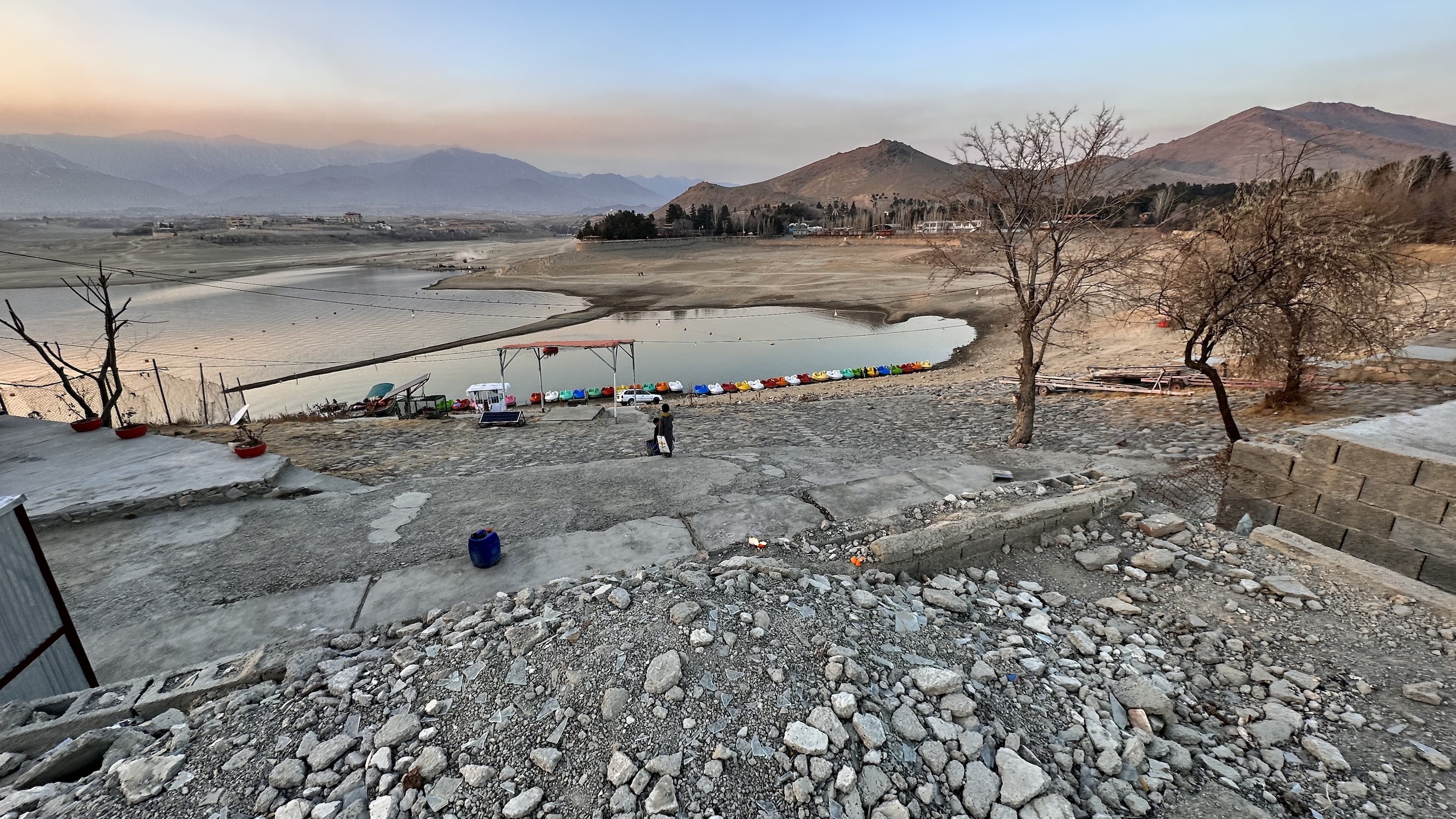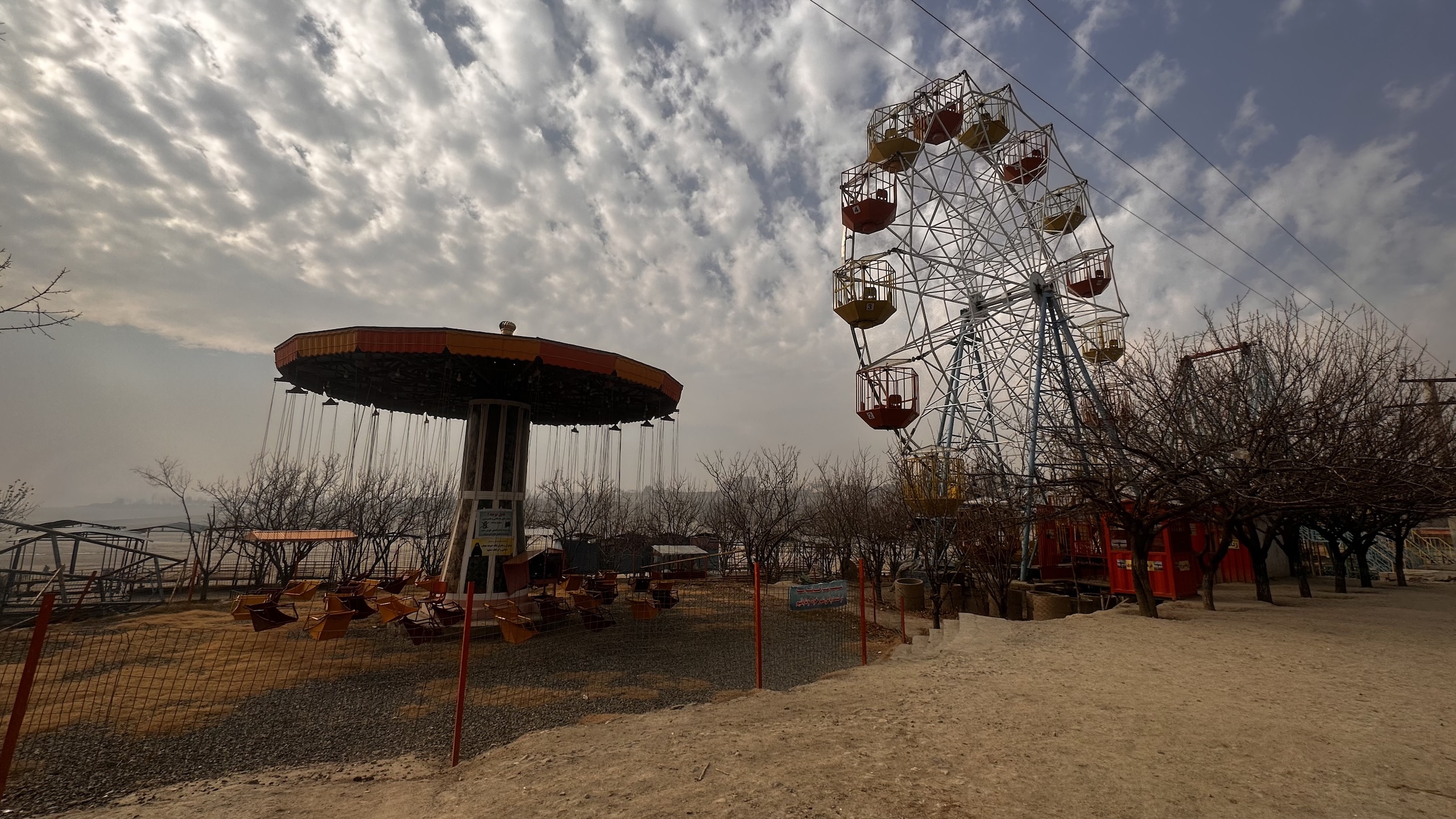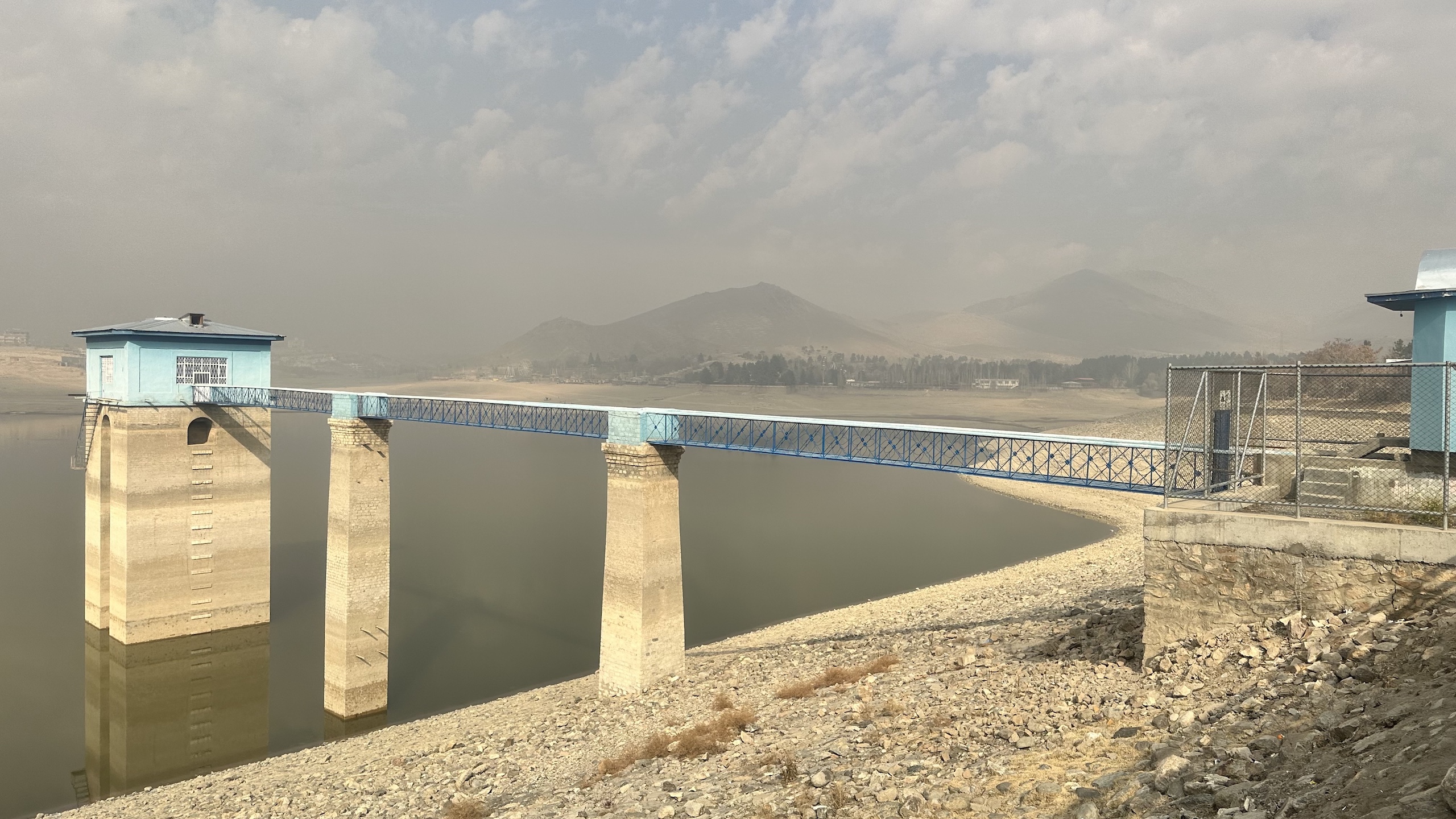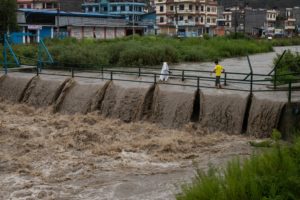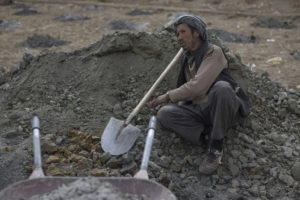Editor’s note: This article gives a rare insight into rising water scarcity in Afghanistan and the state of the current water regime on the ground. As the impacts of climate change exacerbate water loss from ageing infrastructure, experts told Undark’s reporter that the Taliban should be investing in small-scale local projects. This seems to be at odds with recent headlines about the Qosh Tepa Canal, a huge project to divert water from the Amu Darya River. Engineers have said the way it is being constructed means large quantities of scarce water could be lost, while analysts are worried about it inflaming regional tensions – an issue The Third Pole will be examining in the coming months.
This past December, a fleet of colorful swan-shaped boats lined the muddy banks of Qargha Lake, a reservoir on the outskirts of Kabul, Afghanistan. The boats’ owner, 50-year-old Shah Maqsoud Habibi, said his business has vanished, along with much of the lake, a once-popular weekend destination for war-weary Afghans. Over the past few years, a series of droughts have gripped the country, causing reservoirs and other water bodies to dry up. “If there is no water, there is no business for me, and without work, I cannot feed my family,” said Habibi.
Local residents share similar concerns. “I have lived here for 16 years, and this is the first time I am seeing the lake empty,” said 21-year-old Rashid Samim. For two years, he hasn’t been able to properly water his apple and cherry orchards or his modest potato farm, leading to smaller yields.
The droughts have disrupted life in other ways, too. “On most days, we don’t have enough water for daily chores and drinking,” said Samim. Many Afghan homes receive water from private wells, and people have been forced to dig deeper in search of groundwater. While some residents have turned to private water companies, the cost is out of reach for the average household, and anyway, there simply isn’t enough supply to go around, Samim said.
According to Afghan scientists, the recent droughts are illustrative of the broader impact of climate change on a country already ravaged by decades of conflict and poor water management. The situation was exacerbated in 2021, when the Taliban seized control of the country. The regime abolished the National Water Affairs Regulation Authority, the government agency responsible for water management. Many of the previous government’s technical experts fled Afghanistan, fearing for their safety.
Additionally, many aid agencies suspended their work in the region. Afghanistan now faces a deepening humanitarian crisis that impacts 28.3 million people.
“Some key positions in climate sectors are filled by Mullahs” – or religious scholars – “who have zero understanding about climate issues,” said Najibullah Sadid, a water resource expert who has lived in and conducted research in Afghanistan, and is based at the University of Stuttgart in Germany.
Given this, Afghan climate scientists and water resource experts told Undark, the world must find ways to engage with Afghanistan and its leaders on issues of climate. While international aid organisations have legitimate concerns about partnering with a notoriously brutal regime, these experts say, neither Afghanistan nor the world can afford to ignore the country’s ageing water infrastructure and disappearing lakes.
Afghanistan’s mean temperature has increased by 1.8 degrees Celsius since 1950, more than twice the global average. The rising temperatures have affected average precipitation leading to floods and landslides, as well as fluctuations in groundwater levels.
“The consequences of higher temperatures are serious,” wrote Assem Mayar, a water resource management expert and former lecturer at Kabul Polytechnic University in a 2022 post published by Afghanistan Analysts Network, a non-profit policy research organisation. Global warming, he wrote, “affects the water cycle, intensifies extreme events such as floods, droughts, glacier melt, and storms, and is leading to a rise in sea levels. The earth only has one atmosphere and global warming harm transcends political boundaries.”
Some key positions in climate sectors are filled by Mullahs who have zero understanding about climate issuesNajibullah Sadid, water resource expert
“The rapid shrinking of Qargha Lake is alarming,” Sadid told Undark. In the past three years, its surface area has shrunk by nearly two-thirds. While the lake was always of modest size – roughly a third of a square mile – it supplied groundwater for much of Kabul. Any further drying could have “disastrous consequences” for the nation’s capital, Sadid said.
Afghanistan has few natural water resources to begin with, but the problem is compounded by poor infrastructure for water storage and distribution. “Poor water management has led to reservoir sedimentation across Afghanistan,” Sadid said. While reservoirs are constructed to hold water, they also trap sediments such as clay, silt, sand and gravel transported from upstream. The gradual accumulation of sediment can damage a reservoir’s equipment and reduce its water-storage capacity.
“Qargha has lost about 50% of its original storage capacity due to sedimentation,” Sadid said, and it has blocked two of the dam’s bottom gates, creating operational and technical problems.
The Taliban government originally allotted six million Afghanis (about USD 67,000) for monitoring and maintaining the Qargha dam, but, Sadid said, “instead of tackling the sedimentation issues of Qargha reservoir, the money is spent on rehabilitation of roads connecting to Qargha.” He noted that the regime lacks foresight when it comes to climate issues. The Taliban, Sadid said, had “invested in image making, such as making some squares in Kabul more eye-catching,” while ignoring “climate-related projects such as improving green belt of Kabul” and addressing water management issues.
Qargha is only one of the many reservoirs that are drying up around the country, Mayar told Undark. At the same time, Afghanistan has experienced a number of flash floods – with more potentially on the way this spring. “Nature, it sometimes feels, is acting against the people of Afghanistan,” Mayar said. “Worst affected are the rural areas that depend on agriculture.”
Before the Taliban’s takeover, international governments and non-governmental organisations had undertaken projects to develop Afghanistan’s water management capacities and improve the country’s ability to adapt to climate change. These projects included building and maintaining dams, enhancing irrigation, developing renewable energy infrastructure, and strengthening resilience to food insecurity.
But now, concerned about working with the Taliban, the international community is withholding funds for nearly all development projects, including 32 environmental protection projects worth USD 805 million.
“The international community working in Afghanistan right now faces a true dilemma,” said Orzala Nemat, an expert in international development and past director of the Afghanistan Research and Evaluation Unit, an independent research institute based in Kabul. The question, she said, is “whether to accept the Taliban as legitimate rulers of Afghanistan or approach them as hostage takers”.
“These aren’t just questions of principles but also practicality,” she added. For example, the Taliban recently banned women from working at NGOs. “How can an organisation implement humanitarian projects in a culturally conservative place like Afghanistan without the help of women?” she asked. As a deeply conservative country, many spaces in Afghan society are gender segregated. Without women on staff, it will be difficult for NGOs to function in women’s spaces or engage with women-led households.
Traditionally aid has been categorised as either humanitarian or developmental. Humanitarian projects focus on crisis response and life-saving efforts while development projects are longer term and geared toward helping a population avoid future crises. Some donor agencies – and in particular those that provide humanitarian aid – have resumed their work in Afghanistan, and are focused on “providing life-saving services only,” said Nemat. These include the United Nations’ Food and Agriculture Organization and the World Bank.
Climate projects are usually considered developmental, Nemat said, even though such projects could help alleviate the country’s humanitarian crisis. The situation in Afghanistan “cannot be solved by simply providing food packages,” said Nemat. “A can of oil and bag of flour cannot reverse the damage that is being inflicted on the country and region for generations to come.”
Mayar expressed a similar view. International agencies have helped ease the humanitarian crises, he said, “but if we ignore climate change, it will only further the crises in the country and need for humanitarian support. It isn’t sustainable.”
While working in Afghanistan may require some conversations with the Taliban, there are ways to minimise the regime’s role. For example, the United Nations transports cash into the country and places it into a private UN bank, a system that prevents the Taliban from accessing the international money. The extent of such engagement by outside agencies is currently unclear.
Pyotr Kurzin, a consultant at the World Bank, noted that his organisation often wrestles with questions about how much to engage the Taliban “and therefore risk legitimising them”.
As of December, a small stream of water could be spotted flowing alongside the Qargha Reservoir’s ageing dam, a wasteful – and unintentional – release emanating from the lake. Abdul Wase, the Taliban-appointee who operates the dam, attributed the problem to ageing infrastructure. He said that he and a small team of employees have made some repairs, including patching some of the dam’s openings, but he did not clearly explain what work still needed to be done.
“If God wants the water to flow to Qargha,” he maintained, “we are well prepared for containing it.”
In the absence of international aid, Mayar said, the Taliban should invest in small-scale and local projects to help communities adapt to climate change. For instance, Mayar recommended construction of karezs, or “ancient irrigation systems with long horizontal tunnels and vertical wells that tap into the water-table in hillsides”.
“This approach,” he added, “is good for both water storage and reducing flood risk.”
For now, the situation remains precarious. Near the heart of Qargha Lake, a concrete tower rises out of the water with numbers on its side for measuring the water’s depth. On the lake’s best days, the tower would mark a depth of 88 feet. In December, the number was half that.
Wase said he and other employees have already cut off the water to the nearby military camp, fish farms, and golf club. But, he said, even this might not be enough to protect Kabul’s water supply: “Experts have told us that if not replenished this season, the reservoir could be completely dry by June.”
Additional on-the-ground reporting was provided by an Afghan journalist who wishes to remain anonymous for safety reasons.
This article was originally published on Undark. Read the original article.

